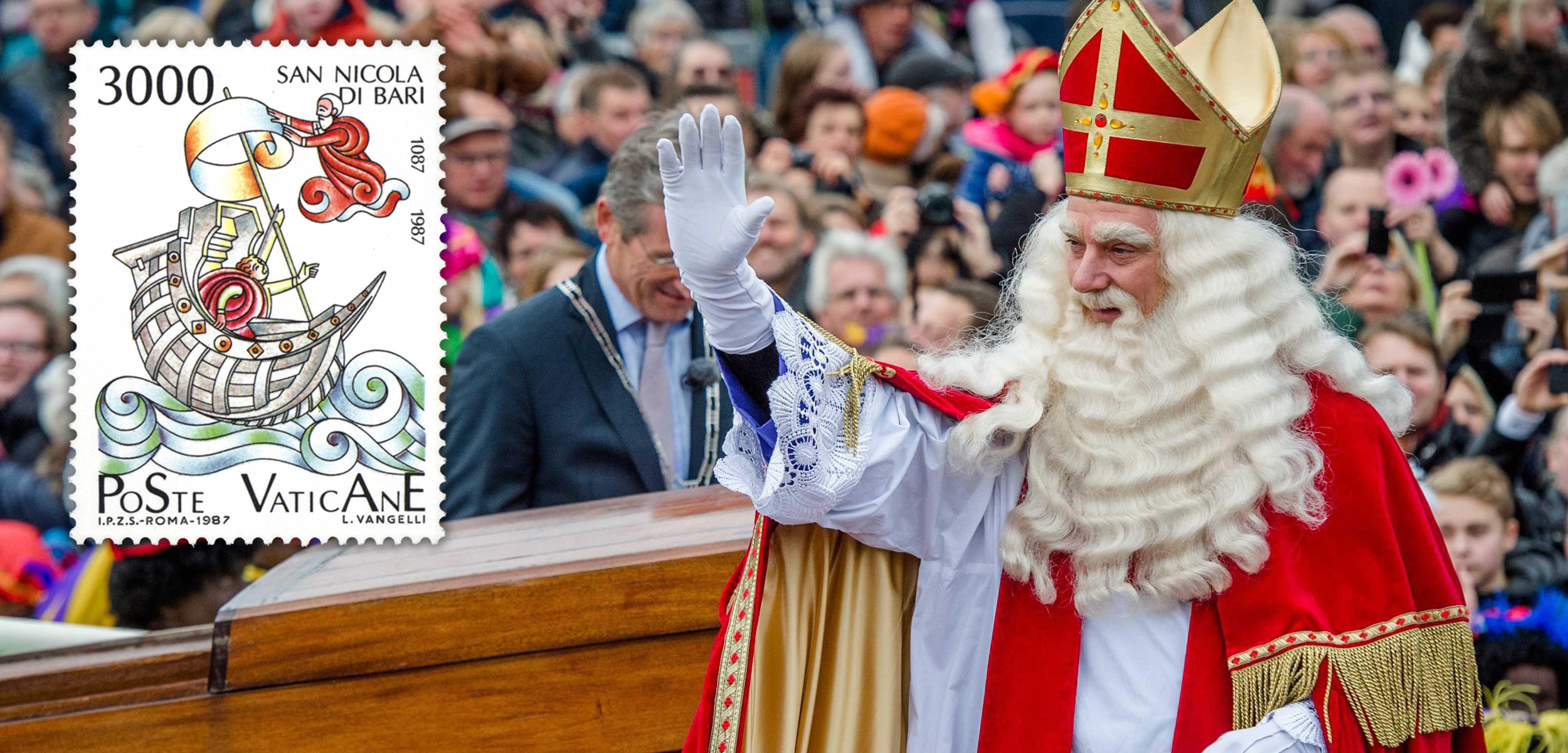Santa Claus Is Coming to Port
Before he was seasonal, he was seagoing.
Article body copy
Postage stamps are lessons in history, politics, science, or geography packed onto a small piece of gummed paper. They’re also beautiful works of art. In Stamped we’re going coastal, with postal.
Jolly old St. Nicholas is everywhere this month, marshaling parade floats, holding babies in malls, and adorning shop window displays. But the Vatican, as with all true fans, cherishes Nicholas’s early work, and this stamp issued for Christmas 1987 commemorates one of his lesser-known gigs as the patron saint of sailors.
The man who would become Santa was born in Turkey in the latter part of the third century, and his connection to the sea began when the devout young man was on a pilgrimage to the Holy Land. En route, a storm struck his ship and one seaman tumbled fatally from the rigging to the deck. As Nicholas prayed in earnest over the fallen man, the storm abated and the sailor revived, much to the crew’s amazement. This was the first of many miracles that eventually led to his canonization.
Nicholas continued his life of devotion and became the bishop in the seaside town of Myra (now Demre, Turkey) around 317 CE. He also maintained a strong connection to the sea. One story from his back catalog of miracles tells of a storm-besieged ship near Myra. As the sailors prayed desperately for salvation, a man appeared amid the gale and calmed the heaving waves. Upon arriving shaken but safe in Myra, the sailors saw the bishop and recognized him as the man in their visions. The saint continued aiding tempest-tossed sailors before and after his death, which is thought to have been around 340 CE.
According to Gerry Bowler, historian and author of Santa Claus: A Biography, St. Nicholas’s maritime cred made him one of the most popular saints. “In the Mediterranean world, everything revolves around the sea and fishing,” he says. “So, if you get to be the patron saint of fishermen, of sailors, then you’re right up there in the pantheon.”
Nicholas lived in Turkey, yet this stamp calls him “San Nicola di Bari,” a name that references a maritime adventure to Bari, Italy. By 1087 CE, the seafaring Normans (“Vikings with haircuts,” as Bowler says) had adopted Nicholas as their patron saint as they sailed the Mediterranean, conquering and colonizing. Bari was a recent Norman acquisition, and the sailors wanted to honor Nicholas. Then, as now, many churches housed relics—bones or other physical remains of saints. Relics drew the devout to the church and tourists to the town. And St. Nicholas’s bones, housed in a church in Myra, were in trouble. The Saracens, who were Muslim, had conquered Myra about 50 years earlier and Nicholas’s devotees worried that in Myra, his beloved relics were in the hands of non-Christians. So a group of Bari merchants sailed out to retrieve them for their new church. Some accounts say they stole his bones while others say they negotiated strenuously, but eventually his rescuers prevailed and carried St. Nicholas on his last sailing voyage. This 1987 stamp marks the 900th anniversary of his arrival in Bari, where his relics remain today.
St. Nicholas remained beloved by sailors for centuries: Christopher Columbus, upon landing on Haiti, named the spot St. Nicholas (now the town of Môle Saint-Nicolas). Today, the saint may prefer a sleigh to ships, but true fans and sailors alike remember that before he took to the skies, he had a steady hand on the tiller.

